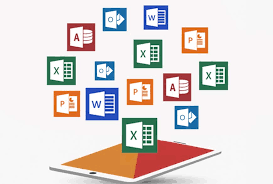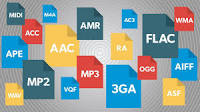The word “computer” comes from the word “compute” which means to calculate. So a computer is normally considered to be a calculating device that can perform arithmetic operations at enormous speed.
All computer system performs the following five basic operations:
- Inputting: The process of entering data and instructions into the computer system.
- Processing: Performing arithmetic operations or logical operations (comparisons like equal to, less than, greater than, etc.) on data in order to convert them into useful information.
- Storing: Saving data and instructions so that they are available for initial or for additional processing as and when required.
- Outputting: The process of producing useful information or results for the user, such as a printed report or visual display.
- Controlling: Directing the manner and sequence in which all of the above operations are performed.
The Units related to perform the basic operations are:
Input Unit
The input unit performs the following functions:
- It accepts (or reads) the list of instructions and data from the outside world.
- It converts these instructions and data in computer acceptable form.
- It supplies the converted instructions and data to the computer system for further processing.
Example: Key-Board, Mouse, Joy-stick, Disk, Scanner, Card Reader, Digital Camera, Microphone.
Output Unit
The output unit performs the following functions:
- It accepts the results produced by the computer which are in coded form and hence cannot be easily understood by us.
- It converts these coded results to human acceptable (readable) form.
- It supplies the converted results to the outside world.
Example: Monitor, Printer, Plotter, Microfilm, Disk, and Speaker.
Central Processing Unit (CPU)
The Control Unit and the Arithmetic Logic unit of a computer system are jointly known as the central processing unit (CPU). The CPU is the brain of any computer system. In a computer system, all major calculations are made inside the CPU and the CPU is also responsible for activating and controlling the operations of other units of a computer system.
Arithmetic Logic Unit
The arithmetic logic unit (ALU) of a computer system is the place where the actual execution of the instructions takes place during the processing operation. To be more precise, all calculations are performed and all comparisons (decisions) are made in the ALU. The data and instructions, stored in the primary storage prior to processing, are transferred as and when needed to the ALU where processing takes place. No processing is done in the primary storage unit. Intermediate results generated in the ALU are temporary transferred back to the primary storage until needed at a later time. Data may thus move from primary storage to ALU and back again to storage many times before the processing is over. After the completion of processing, the final results which are stored in the storage unit are released to an output device.
The type and number of arithmetic and logic operations that a computer can perform is determined by the engineering design of the ALU. However, almost all ALUs are designed to perform the four basic arithmetic operations – add, subtract, multiply, divide and logic operations or comparisons such as less than, equal to, or greater than.
Control Unit
By selecting, interpreting and seeing to the execution of the program instructions, the control unit is able to maintain order and direct the operation of the entire system. Although, it does not perform any actual processing on the data, the control unit acts as a central nervous system for the other components of the computer. It manages and coordinates the entire computer system. It obtains instructions from the program stored in main memory, interprets the instructions and issues signals that cause other units of the system to execute them.
Memory Unit
The specific functions of the memory unit are to hold (store):
- All the data to be processed and the instructions required for processing (received from input devices).
- Intermediate results of processing.
- Final results of processing before these results are released to an output device.
Understanding Booting Process:
When a computer is switched Off, it has no more function as a Showpiece. But when the computer is switched on, it becomes a strange object after performing some important routine within few seconds (the time varies from computer to computer). Within the routine the computer performs some procedures to load the Operating System (OS) software form Storage Area to Random Access Memory (RAM). Because, the OS is essential for running all other programs. The process of checking and loading OS is called booting or startup process.
Booting process includes the following steps:
1. BIOS[1] loaded to the RAM.
2. Performs Power On Self-Test (POST) to check hardware that connected to PC. The POST routine performs the following tests:
a. It checks systems for hardware error including configuration error.
b. It detects interrupt, I/O address or Base memory address conflicts. If any major error found during the POST routine then either an error code number or a series of beeps will tell the cause of error.
3. Boot Record is loaded to the RAM. Boot Record contains instructions for loading the Operating System in RAM. It is a program that stored on the master boot sector of start up disk. Boot record looks for some system files (e.g., Io.sys, msdos.sys, comand.com, config.sys etc) that are exist in Floppy Diskette or in Hard Disk or in CD-ROM. The system files contain the information for loading Operating System. Generally the Operating System is stored in a Hard disk. The disk contains the booting file is known as boot disk/Startup Disk.
4. Finally the Operating System is loaded to the memory and a stable status is appeared. This status indicates that the computer is ready to take input form user. Generally, in graphical mode this environment is called desktop environment or simply desktop.



Comments are closed.